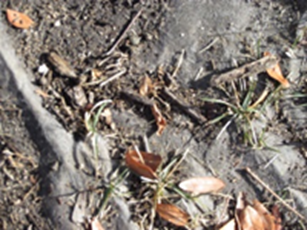Landscape Fabric – Yea or Nay?
- 2024-03-02
- By mkirk
- Posted in Horticulture, The Garden Buzz
By Carol Gilmore, Colorado Master Gardener

Gardeners love the plants in their gardens but hate the weeds that encroach on their favorite plants. In desperation and a dislike of getting on their knees to weed, they may turn to alternate solutions like landscape fabric.
We have learned more about landscape fabric over the years. It often does not do what it is supposed to do, especially over time – keep the weeds out. It can be effective in the short term, but within a few years, the pores can clog with dirt. This prevents water and air from getting to plant roots and allows weeds to germinate on top of the landscape fabric. As the fabric itself breaks down, weeds can grow right through the fabric.

From a maintenance perspective, landscape fabric can be problematic. Holes cut in the fabric for plants are often too small to accommodate a growing plant, thus girdling the stems and compromising plant health. Groundcover plants, designed to spread, grow on top of the fabric without access to new rooting space. In windy areas, mulch can easily move off the fabric.
From an ecological standpoint, landscape fabric has a negative impact on soil, earthworms and ground-nesting bees. The fabric prevents organic materials from naturally degrading into the soil and enriching it, eventually leading to sterile, unhealthy soil. Earthworms do not survive in areas covered with landscape fabric. The fabric prevents them from coming to the surface to help aerate and improve the soil. Ground-nesting bees, which are beneficial pollinators, cannot penetrate fabric to build their nests.
Landscape fabric does have its place in the landscape in certain situations. Some like the idea that it may reduce the use of toxic herbicides. Others find it useful in large shrub plantings, or with hardscape such as rock beds or lining garden paths. If you choose to install fabric with plants, remember to cut a generous hole to accommodate future plant growth.
If weed suppression is your main goal, it is better to go with a natural organic or inorganic mulch and skip the landscape fabric altogether. Many natural materials can be used for weed suppression including grass clippings, spent hops, composted leaves, newspaper, peat, pine needles, shredded bark, straw, wood chips and pea gravel.
For further information, see fact sheets and resources here.
Horticulture Resources
- Garden Buzz Archives
- CSU Extension Resources
- Colorado Master Gardener Program
- Foothills to Plains Native Plant Master Program
- Native Bee Watch Community Science Program
- The Co-Hort Blog
- PlantTalk Colorado
- Soil Testing
- Plant Select
- Emerald Ash Borer
- Japanese Beetle
- Colorado State Forest Service
- Ask an Expert


